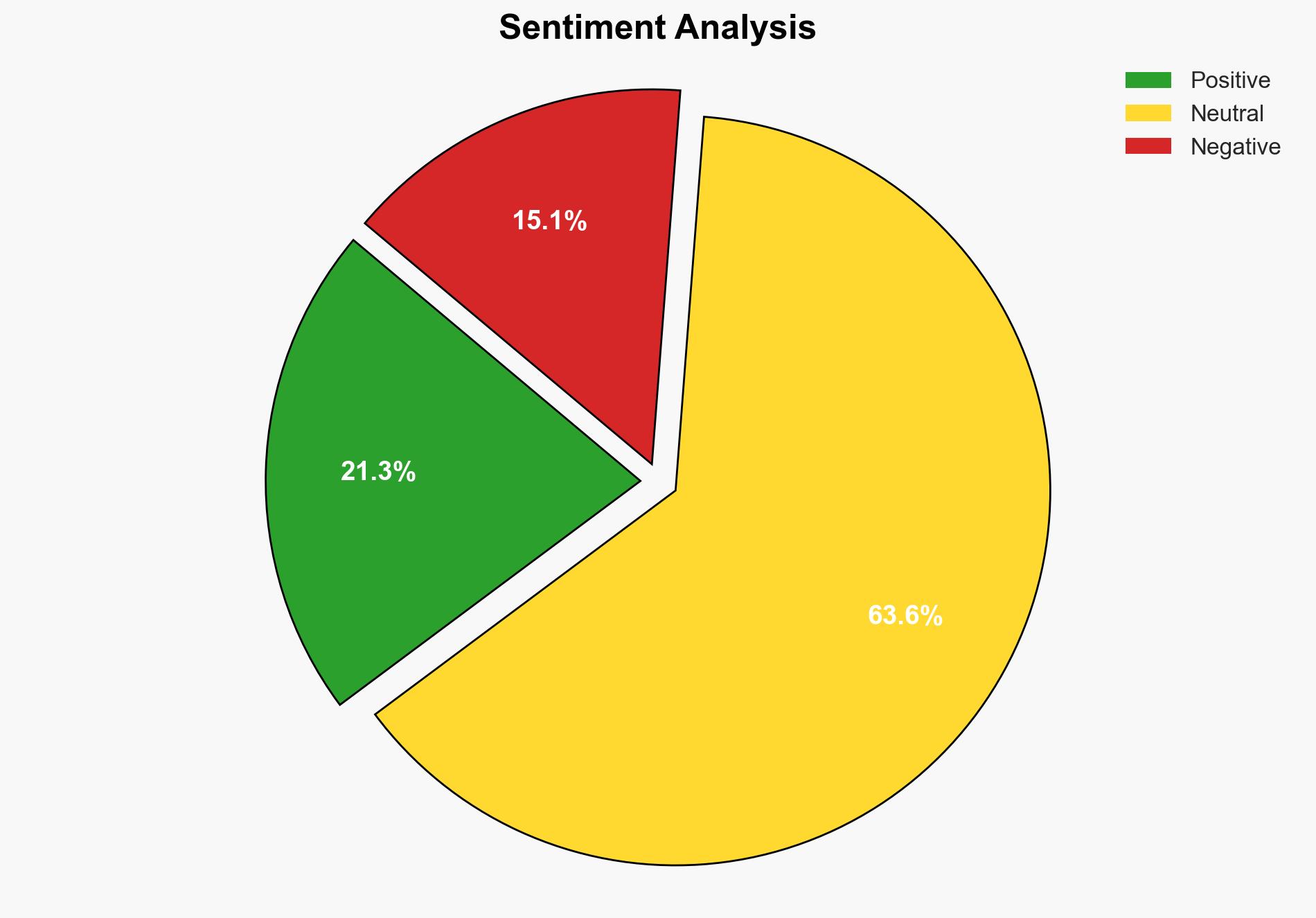When War Was Reintroduced in Europe Dissolution of NATO – Globalresearch.ca
Published on: 2025-03-26
Intelligence Report: When War Was Reintroduced in Europe Dissolution of NATO – Globalresearch.ca
1. BLUF (Bottom Line Up Front)
The dissolution of NATO is being discussed in the context of its historical aggression and expansionist policies, particularly in relation to Serbia and the broader Balkan region. The conference held in March at the Serbian Military Club emphasized the need for a cultural remembrance of NATO’s actions and called for a reevaluation of its role in a multipolar world order. The strategic implications include potential shifts in international alliances and increased tensions in Europe, with a focus on Serbia’s sovereignty and territorial integrity.
2. Detailed Analysis
The following structured analytic techniques have been applied for this analysis:
General Analysis
The conference highlighted the historical grievances against NATO’s actions in Serbia, particularly the 1999 aggression. The participants argued that NATO’s transformation from a defensive alliance to an aggressive entity threatens global stability. The emphasis was placed on the illegal establishment of military bases, such as Camp Bondsteel, and the unilateral actions that have undermined Serbia’s sovereignty. The call for a reevaluation of NATO’s role in a multipolar world suggests a significant geopolitical shift, with potential repercussions for European security dynamics.
3. Implications and Strategic Risks
The potential dissolution of NATO poses risks to regional stability, particularly in the Balkans. The focus on Serbia’s territorial integrity and the call for compensation for war damages could lead to increased diplomatic tensions. The shift towards a multipolar world order may result in realignment of alliances, impacting national security and economic interests. The continued presence of foreign military bases in Europe, particularly in the Balkans, remains a contentious issue that could escalate into broader conflicts.
4. Recommendations and Outlook
Recommendations:
- Engage in diplomatic efforts to address historical grievances and foster dialogue between NATO and affected nations.
- Review and potentially revise international agreements to reflect the current geopolitical landscape and promote stability.
- Encourage transparency and accountability in military operations to build trust among international stakeholders.
Outlook:
In the best-case scenario, diplomatic engagement leads to a peaceful resolution of grievances and a redefined role for NATO that aligns with contemporary global dynamics. In the worst-case scenario, unresolved tensions could lead to increased regional instability and potential conflicts. The most likely outcome involves gradual adjustments in NATO’s policies and strategic partnerships, with ongoing negotiations to address historical and current issues.
5. Key Individuals and Entities
The report references significant individuals and entities involved in the discourse surrounding NATO’s role and actions. These include participants of the conference and entities such as the Serbian Military Club. The emphasis is on the collective stance and strategic recommendations made during the event.





